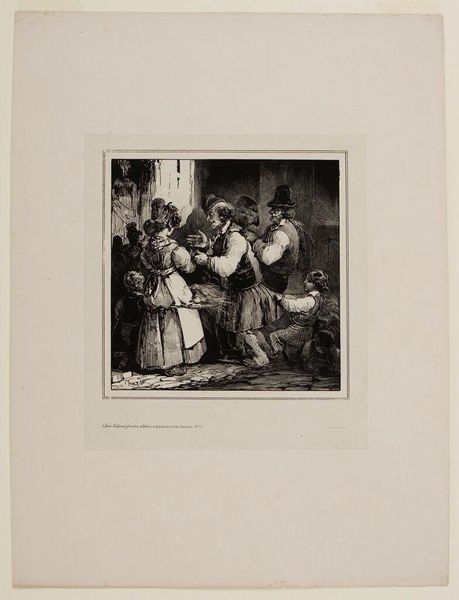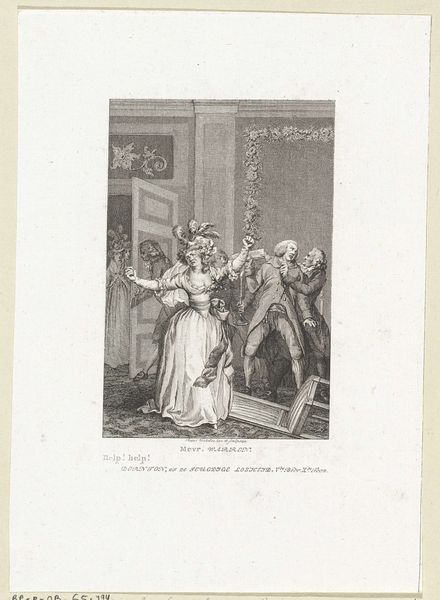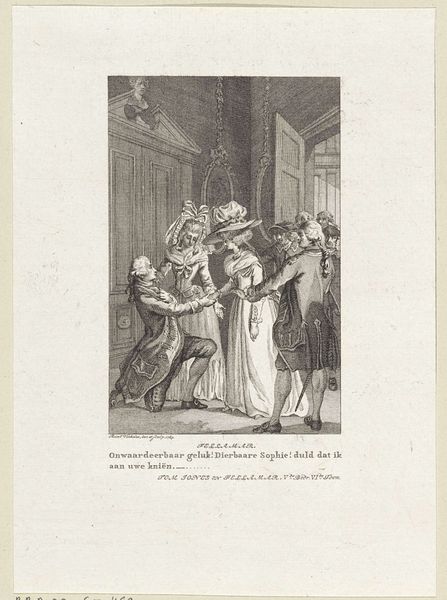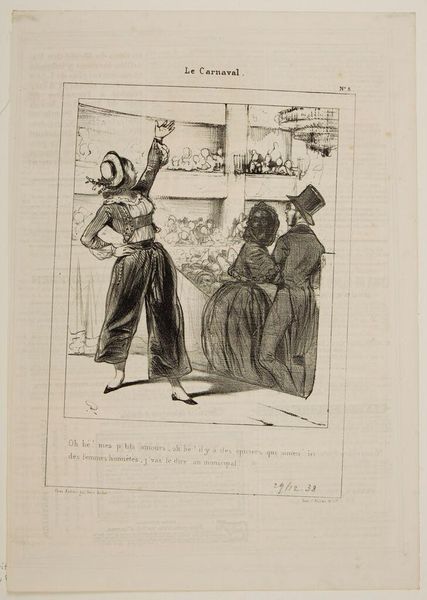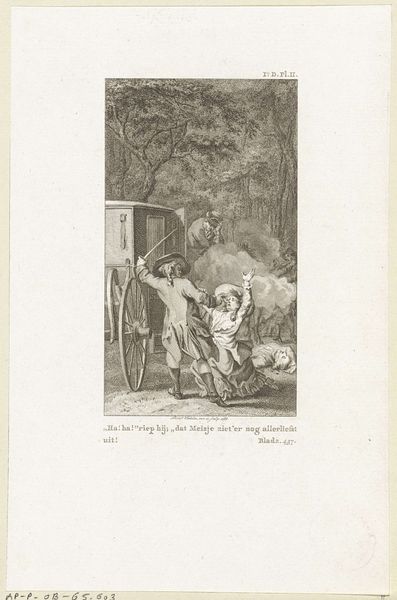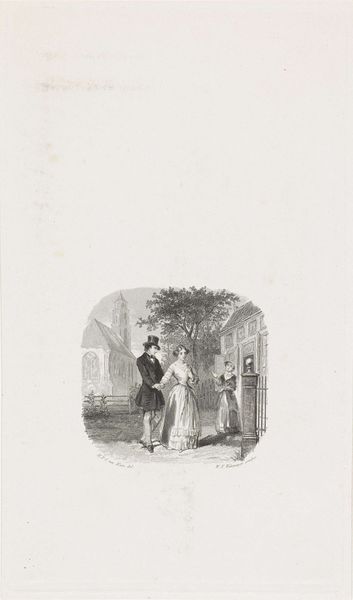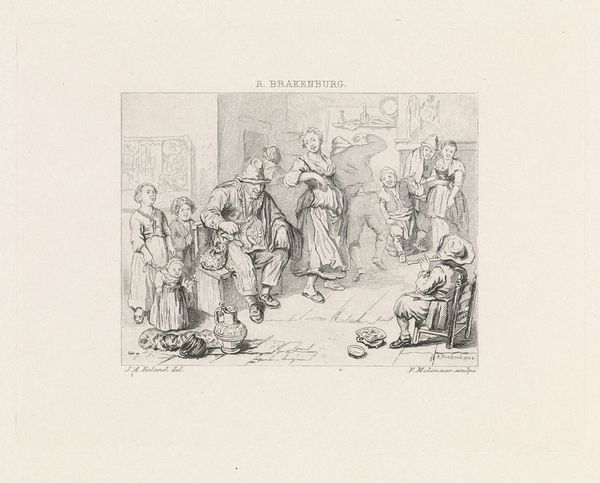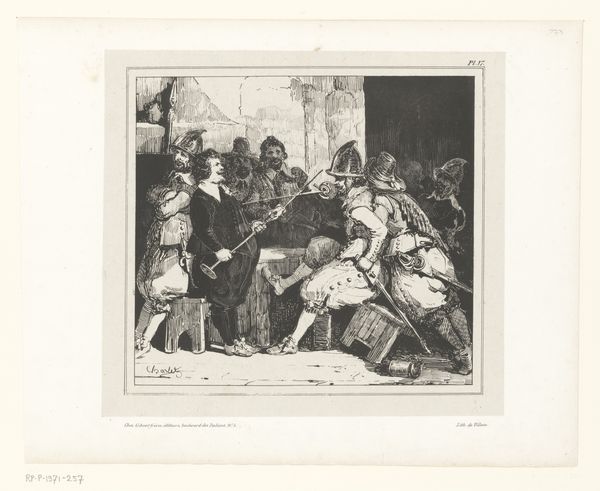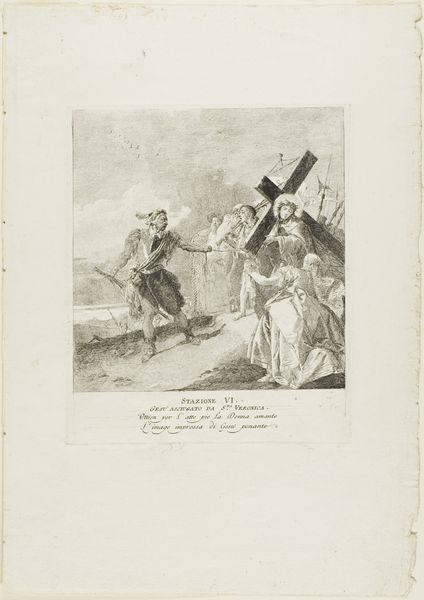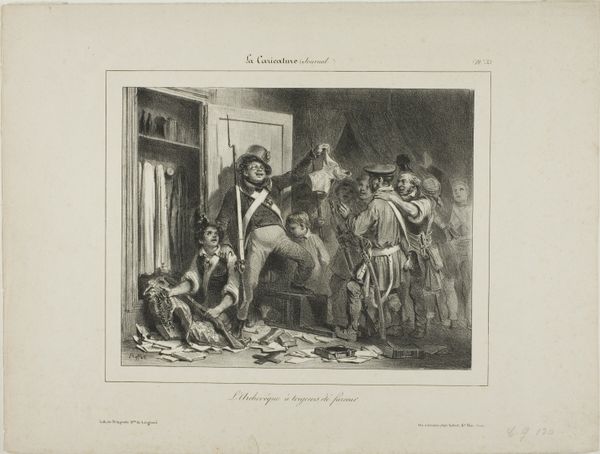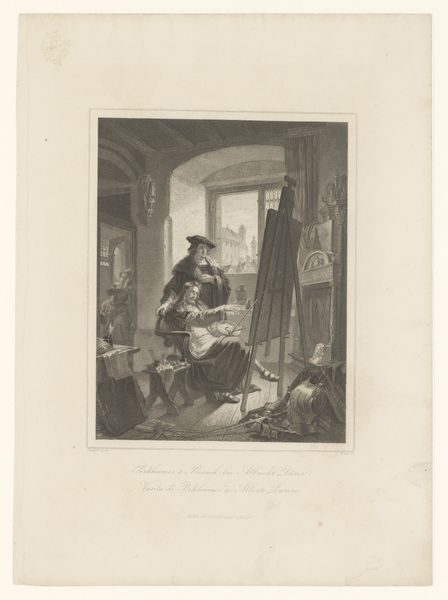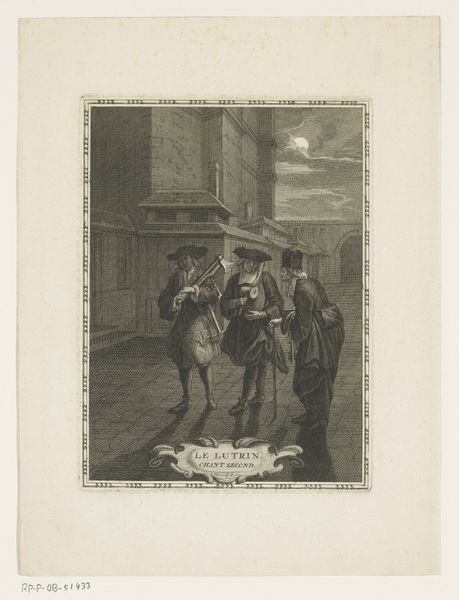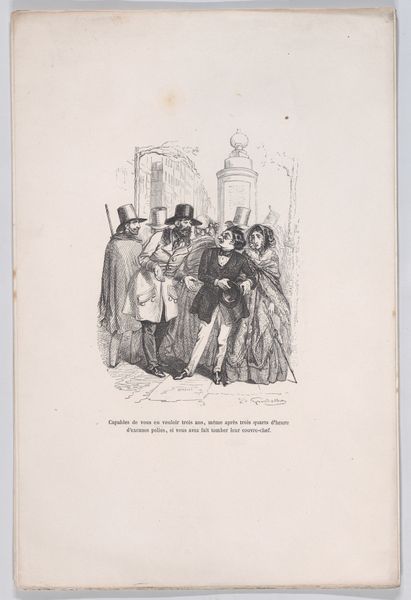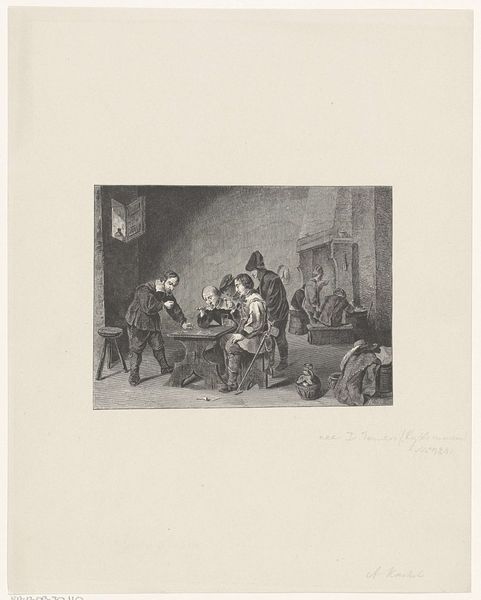
drawing, print, pen, engraving
#
drawing
#
aged paper
#
toned paper
#
light pencil work
# print
#
pencil sketch
#
sketch book
#
personal sketchbook
#
idea generation sketch
#
sketchwork
#
romanticism
#
sketchbook drawing
#
pen
#
genre-painting
#
sketchbook art
#
engraving
Dimensions: height 340 mm, width 245 mm
Copyright: Rijks Museum: Open Domain
Curator: Looking at this print by Nicolas Toussaint Charlet, titled "Inkwartiering, 1832," immediately gives you the feeling that we’ve stumbled upon a scene unfolding in a personal sketchbook. It's all swift lines and the suggestion of depth. Editor: It does, doesn't it? A snapshot really. What strikes me first is the contrast. One figure practically bursting with anger, while the other seems weighed down by resignation, by the drudgery of duty perhaps? I mean, think about what "inkwartiering," or quartering, actually meant in that era. Curator: Exactly, it’s almost brutally honest. The drawing uses a seemingly simple style, and in it, we see the artist reflecting on the less glorious, mundane realities of military life—that of ordinary soldiers billeted in civilian homes, something never really by mutual consent. Editor: Which brings up all sorts of tensions! These soldiers are literally being forced upon these communities. It speaks volumes about power, about who controls not only territory, but domestic space and resources. Who is burdened with hosting unwanted guests? I suspect gender dynamics play a central part. Curator: Yes! I can't help but wonder about the homeowner's perspective, about the negotiation—or lack thereof—when the army rocks up and announces they’re setting up camp. It’s quite evocative; you almost hear the door slam! Editor: There is that strong sense of implied narrative here, despite its minimalist form. Look at the placement of the house number ‘100’ on the door. It gives me pause to consider how standardization and enumeration make even individual homes subject to military oversight and control. Curator: Indeed. The romantic spirit here is strong because, despite the precision of the print itself, Charlet offers us something much more. Editor: Right, that combination of Romanticism mixed with political and social commentary offers an opening to reconsider assumptions, not only of military operations but also questions of social injustice that can come from conflict itself. It makes me appreciate the understated rebellion. Curator: Agreed! So much said with so little. It certainly has one thinking. Editor: Yes, and I see it too! The intimate format of this drawing offers a valuable moment of reflection amidst histories that all too often glamorize violence and warfare.
Comments
No comments
Be the first to comment and join the conversation on the ultimate creative platform.
